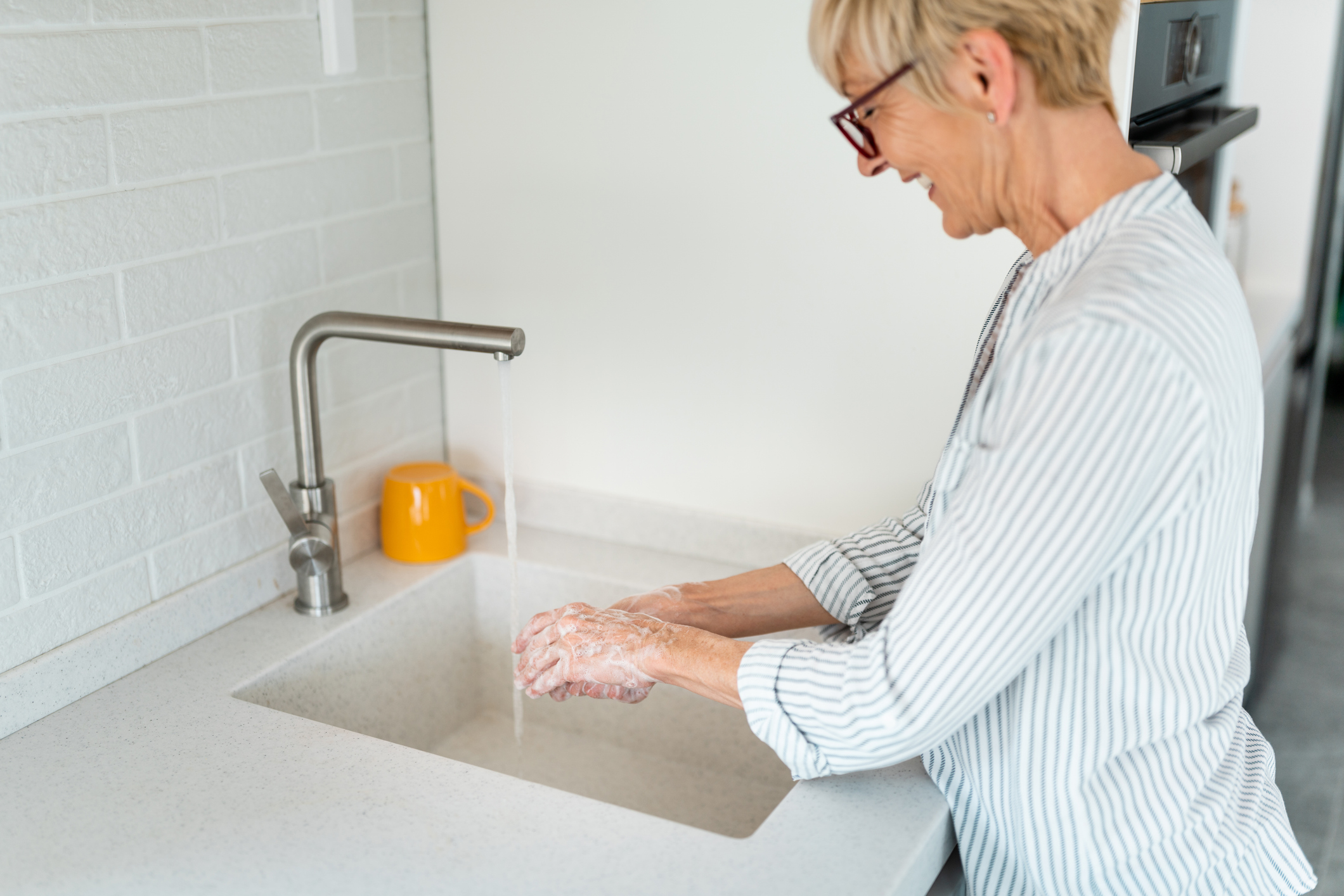Get Easy Health Digest™ in your inbox and don’t miss a thing when you subscribe today. Plus, get the free bonus report, Mother Nature’s Tips, Tricks and Remedies for Cholesterol, Blood Pressure & Blood Sugar as my way of saying welcome to the community!
How to make friends, influence people and survive the office germs

There’s a simple health habit that takes 20 seconds to perform but provides health protection 24/7. And it will make you the toast of the office because, let’s face it, no one likes that co-worker who sneezes into their hands and spreads their germs all around the office — especially during cold and flu season.
It’s called washing your hands. According to the Centers for Disease Control and Prevention (CDC), handwashing:
- Reduces the chances of life-threatening diarrhea by up to 50 percent.
- Could prevent a million deaths a year worldwide if everyone washed their hands enough.
- Could prevent food poisoning in the majority of cases.
- Can reduce your risk of catching a cold or flu by 16 percent.
Just how germ-filled is your office?
Well, aside from those few persistent co-workers who will show up for work no matter how sickly and contagious they may be, you have other threats…
According to a study from commercial products company Kimberly-Clark Professional, the watercooler, microwave door handle and refrigerator handle are among the dirtiest places in a typical office. How many times a day do you touch those?
In the study, researchers analyzed the swabs using an ATP meter, a device that assesses sanitary conditions by measuring levels of adenosine triphosphate, a molecule found in animal, vegetable, bacteria, yeast, and mold cells. High levels of ATP indicate that a surface is loaded with bacteria and viruses. An ATP reading over 100 suggests that a surface could afford to be cleaned, while readings of 300 or higher are considered officially dirty and at high risk for spreading illness.
Here’s a glimpse of office surfaces with the highest ATP levels—readings of 300 or more. Surprisingly, the dirtiest surfaces weren’t in the restroom, but in areas where employees prepare and eat food.
- 75 percent of break room sink-faucet handles
- 48 percent of microwave door handles
- 27 percent of keyboards
- 26 percent of refrigerator door handles
- 23 percent of water fountain buttons
- 21 percent of vending machine buttons
And don’t forget about desk phones, coffee posts and dispensers. So what’s a working stiff to do? Wash your hands — often.
When and how should you wash your hands?
In addition to washing your hands at the office, the Mayo Clinic suggests you always wash your hands after:
- Preparing food, especially raw meat or poultry
- Using the toilet or changing a diaper
- Touching an animal or animal toys, leashes or waste
- Blowing your nose, coughing or sneezing into your hands
- Treating wounds or caring for a sick or injured person
- Handling garbage, household or garden chemicals, or anything that could be contaminated — such as a cleaning cloth or soiled shoes
- Shaking hands with others
They also note that antibacterial soap is no more effective at killing germs than is regular soap. Using antibacterial soap might even lead to the development of bacteria that are resistant to the product’s antimicrobial agents — making it harder to kill these germs in the future.
Getting rid of germs though handwashing is as easy as:
- Wetting your hands with running water — either warm or cold.
- Applying liquid, bar or powder soap.
- Lathering well.
- Rubbing your hands vigorously for at least 20 seconds. Remember to scrub all surfaces, including the backs of your hands, wrists, between your fingers and under your fingernails.
- Rinsing well.
- Drying your hands with a clean or disposable towel or air dryer.
- If possible, use a towel or your elbow to turn off the faucet.
So don’t forget to wash your hands! Because the future of your health — and others — is in your hands!












